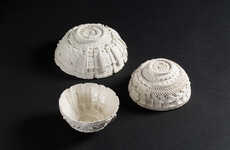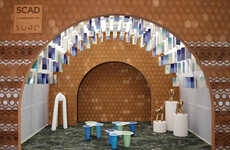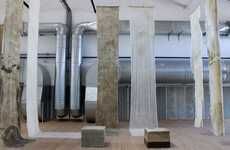Students at the Tyler School of Art Create 'Patterning Porosity'
Jamie Danielle Munro — April 25, 2014 — Art & Design
References: tyler.temple.edu & designboom
Students at the Tyler School of Art have created a significant installation, which covers the windows of one of the floors on campus. The title of the piece is 'Patterning Porosity,' referencing the porous look of the whole thing, with holes in certain areas to allow the light from the outside to shine through.
According to DesignBoom, "each student was given a portion to create based on intricate details found in nature, with the individual aesthetics then blended into a singular and homogenous construction." Even though each section was done by various students, the overall look of the installation looks extremely in-sync.
Demonstrating the talent that the Tyler School of Art attracts, this Patterning Porosity' piece is a direct display of what can be achieved when attending this educational institution.
Photo Credits: designboom, tyler.temple.edu
According to DesignBoom, "each student was given a portion to create based on intricate details found in nature, with the individual aesthetics then blended into a singular and homogenous construction." Even though each section was done by various students, the overall look of the installation looks extremely in-sync.
Demonstrating the talent that the Tyler School of Art attracts, this Patterning Porosity' piece is a direct display of what can be achieved when attending this educational institution.
Photo Credits: designboom, tyler.temple.edu
Trend Themes
1. Porous Artwork - Opportunity for artists to incorporate porous textures in their artwork, creating visually striking pieces.
2. Collaborative Construction - Potential for collaborative art projects where individual contributions come together to create a cohesive and visually appealing installation.
3. Nature-inspired Aesthetics - Growing trend of incorporating intricate details found in nature into artistic designs.
Industry Implications
1. Art - Innovative techniques and materials can be used to create unique and captivating artworks.
2. Education - Educational institutions can promote collaboration and foster creativity by encouraging students to work on large-scale art installations.
3. Architecture - Architects can explore the use of porous structures and designs to allow natural light to permeate indoor spaces.
0.4
Score
Popularity
Activity
Freshness






















